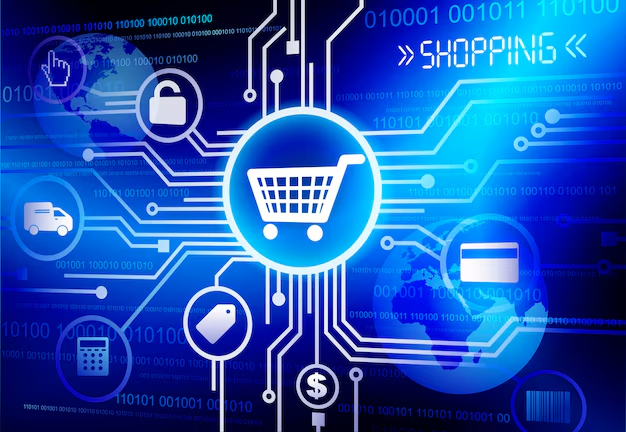Retail Digital Transformation: How Brands Are Adapting to E-commerce
Introduction
Retail has undergone a significant transformation in the past decade, shifting from traditional brick-and-mortar stores to a more dynamic and digital-first approach. This evolution, driven by advancements in technology and changing consumer behaviors, has forced brands to adopt new strategies to stay relevant. Digital transformation in retail is no longer optional; it is a necessity for survival in an increasingly competitive market. This article explores how brands are adapting to e-commerce, the key technologies driving digital transformation, and the challenges they face in the process.
The Shift Towards E-commerce
E-commerce has revolutionized the retail industry, offering consumers unparalleled convenience, accessibility, and personalization. The COVID-19 pandemic accelerated the adoption of online shopping, pushing businesses to expand their digital presence rapidly. Brands that once relied on physical stores had to pivot to online platforms to meet customer demands.
Key Drivers of E-commerce Growth:
- Consumer Behavior Changes – Modern shoppers prefer online shopping due to ease, variety, and personalized experiences.
- Mobile Commerce (M-Commerce) – The widespread use of smartphones has made mobile shopping more accessible and popular.
- Social Media Influence – Platforms like Instagram, Facebook, and TikTok play a crucial role in influencing purchasing decisions.
- Subscription-Based Models – Companies like Amazon and Walmart offer subscription services to enhance customer retention and loyalty.
- Data-Driven Marketing – Retailers leverage AI-driven analytics to personalize recommendations and optimize customer engagement.
Technologies Driving Retail Digital Transformation
To remain competitive, brands are integrating cutting-edge technologies into their e-commerce strategies. Some of the most impactful technologies include:
1. Artificial Intelligence (AI) and Machine Learning (ML)
AI and ML help retailers analyze consumer data, predict trends, and personalize experiences. AI-powered chatbots enhance customer support, while ML algorithms suggest products based on browsing history.
2. Augmented Reality (AR) and Virtual Reality (VR)
Brands like IKEA and Sephora use AR and VR to offer virtual try-on experiences, allowing customers to visualize products before purchasing.
3. Blockchain for Transparency and Security
Blockchain enhances supply chain transparency and secures online transactions. It helps verify product authenticity, reducing counterfeit risks.
4. Internet of Things (IoT)
IoT-connected devices, such as smart shelves and automated inventory management, optimize supply chain operations and improve customer experiences.
5. Cloud Computing
Cloud-based platforms provide scalability, enhance security, and support omnichannel retail strategies, allowing brands to manage vast amounts of data efficiently.
Omnichannel Retailing: Bridging Online and Offline Experiences
Many retailers have embraced an omnichannel approach to provide a seamless shopping experience across multiple platforms. This strategy integrates physical stores, mobile apps, websites, and social media to enhance customer interaction.
Examples of Successful Omnichannel Strategies:
- Nike – Combines its mobile app with in-store experiences to provide exclusive deals and personalized recommendations.
- Zara – Uses RFID technology to track inventory in real-time, ensuring a smooth shopping experience across channels.
- Walmart – Offers a hybrid shopping model with online ordering and in-store pickup, making shopping more convenient.
Challenges in Retail Digital Transformation
Despite the benefits, digital transformation in retail comes with several challenges:
1. Cybersecurity Threats
With increased online transactions, retailers face risks of data breaches, requiring strong security measures to protect customer information.
2. Customer Trust and Privacy Concerns
Consumers demand transparency in how their data is used, making compliance with privacy laws like GDPR and CCPA essential.
3. High Implementation Costs
Investing in new technologies, training employees, and upgrading digital infrastructure can be expensive for small to mid-sized retailers.
4. Supply Chain Disruptions
Global supply chain issues, worsened by the pandemic, have created logistical challenges that impact product availability and delivery times.
5. Competition from E-commerce Giants
Small retailers struggle to compete with large-scale platforms like Amazon and Alibaba that dominate the online marketplace.
Future of Retail in the Digital Age
The future of retail will continue to evolve with advancements in AI, automation, and consumer preferences. Some emerging trends include:
- Voice Commerce – Shopping via voice assistants like Amazon Alexa and Google Assistant will become more common.
- Hyper-Personalization – Retailers will use AI-driven insights to deliver highly customized shopping experiences.
- Sustainable E-commerce – Brands will focus on eco-friendly packaging, ethical sourcing, and carbon footprint reduction.
- Metaverse Shopping – Virtual stores in the metaverse will provide immersive shopping experiences.
Conclusion
Retail digital transformation is reshaping how brands interact with customers and conduct business. By embracing innovative technologies, adopting omnichannel strategies, and addressing key challenges, retailers can thrive in the competitive e-commerce landscape. The future belongs to brands that can seamlessly blend digital and physical experiences while prioritizing customer convenience and engagement.














Post Comment